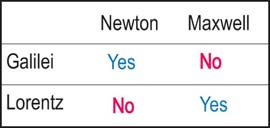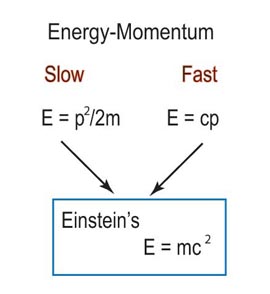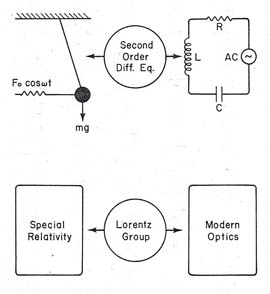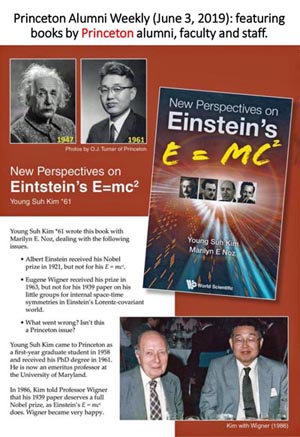Maxwell and Einstein

|
http://www-gap.dcs.st-and.ac.uk/~history/ PictDisplay/Maxwell.html
-
These days, we all know the differential and integral forms of
Mexwell's equations. In addition, we also know that they
take the form of the four-by-four matrix representations of the
Lorentz group. These were not done overnight. It took
many years to reach the Lorentz-covariant formulation of
Maxwell's equations.
form.
- Arnold Sommerfeld is known to us through the textbooks he wrote
while he was in Munich. His textbooks were translated into English
in the early 1950s. His book on
Electrodynamics explains how this mathematical refinement
took place largely by scientists in Koenigsburg. In his book,
Sommerfeld is quite proud of the fact that he was born and educated
in Koenigsburg. Doe you know where Koenigsburg is or was.
Click here for an article
about this forgotten city.



- Indeed, Koenigsberg was the birthplace of mathematical physics. There
physicists and mathematicians gained a deeper understanding of Maxwell's
equations. Among them was Hermann
Minkowski. He was born in Lithuania
and studied in Koenigsberg. He spent some years in Zurich before settling
down in Goettingen. You can obtain a detailed history of his personal
life by googling webpages. The point is that Minkowski completed the
four-dimensional covariant formulation of Maxwell's equations in 1907.
Einstein took several coursed given by Minkowski while he was Zurich.
At that time, many people were working on the Lorentz group applicable to Maxwell's equations. Its covariant formulation emerged because those equations were born to be covariant from the physical point of view. However, there was another important equation, namely Newton's equation which is not Lorentz-covariant. Unlike others, Einstein was interested in electrons moving in electromagnetic fields. Then you know what happened in 1905.
- Click here for more about the
Lorentz-covariant world.
- If I tell this story to young people these days, they say I am wasting
their time, because history is of no use to them. They are right.
What is then the future? In order to construct their own future, it
is not completely useless to study what Einstein did. Einstein was
interested in applying the Lorentz group to a branch of physics where
the Lorentz group was unlikely to be applicable.
These days, there are many branches physics where the Lorentz group is not likely to be applicable. Classical mechanics has nothing to do with Lorentz transformations, but linear canonical transformations are representations of the Lorentz group. So is the problem of coupled harmonic oscillators. In optics, coherent and squeezed states are representations of the Lorentz group.

- How about modern optics? What do polarizers and lenses have
to do with the Lorentz group?
Click here if you think it is a stupid question.
Here is the point. In order for physical problems to be soluble, they have to be either in the form of harmonic oscillators and two-by-two matrices. Among the recent entries, the physics of qubits is a physics of two-by-two matrices. Classical ray optics is also a physics of two-by-two matrices.
- How about the Lorentz group? It can be represented by a set of
two-by-two matrices. The group SL(2c) is the universal covering
group for the six-parameter Lorentz group. Thus, if you are working
on the physics of two-by-two matrices, you are working on the physics
of the Lorentz group.
- By working on Maxwell's equations, those Koenigsberg pioneers were
working on the physics of the Lorentz group. Einstein discovered
the principle of relativity while working on the physics of the
Lorans group.
- Click here for
engineering applications of Maxwell's equations.
- I would like to thank Jerzy Kocinski of Poland for telling me about
Arnold Sommerfeld. Here is
his photo which I took in Hobart, Tasmania (Australia 1998)
|
- Click here for his home page.
- His Einstein page.
- His Princeton page.
- His Style page.

I received my PhD degree from Princeton in 1961, seven years after high school graduation in 1954. This means that I did much of the ground work for the degree during my high school years.
